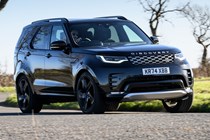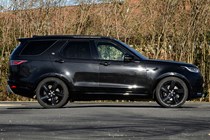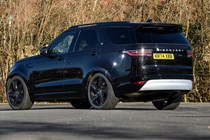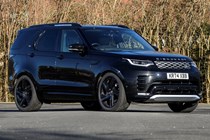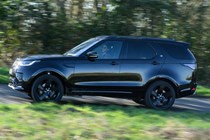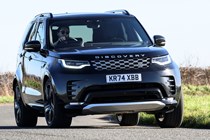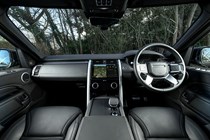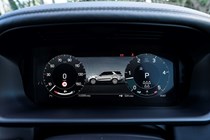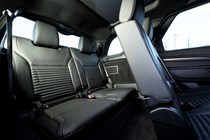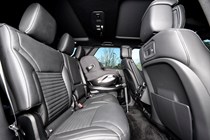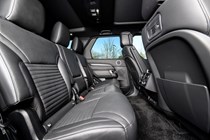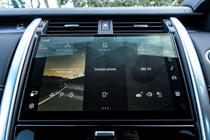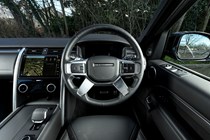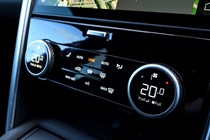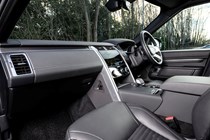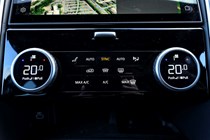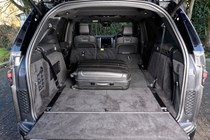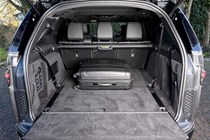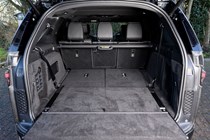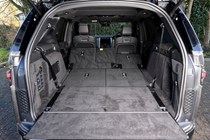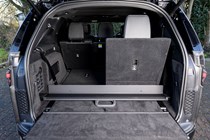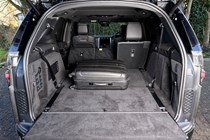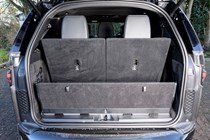
Land Rover Discovery engines, drive and performance
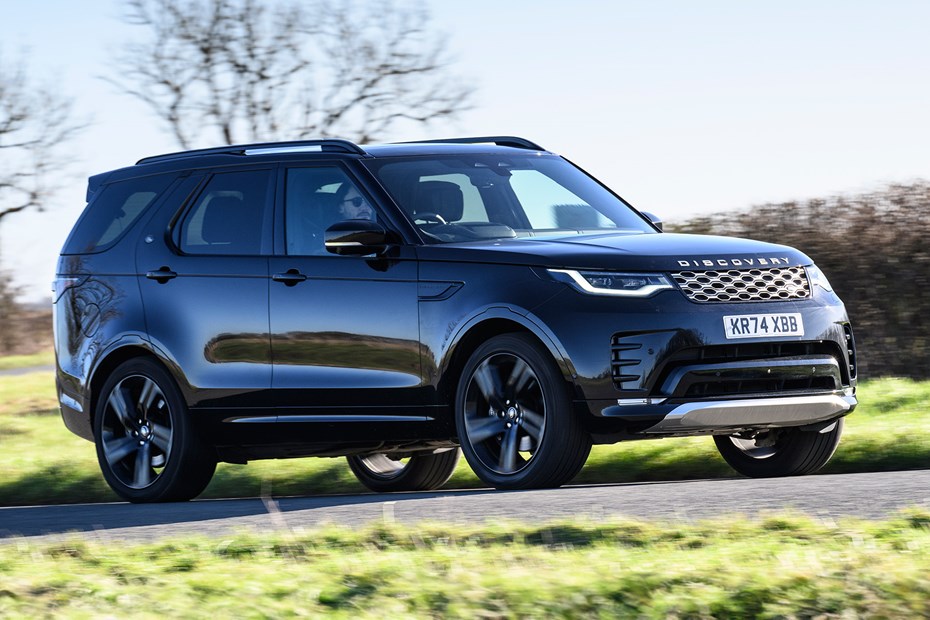
- Just one diesel offered
- Straight-six with mild hybrid
- No plug-in option
Diesel engine
For many, this is was always the only natural engine choice for a Discovery and it’s easy to see why. Yes, it has been available with petrol power in the past, but the lumpy diesel upfront really suits this car. With all that power and torque on tap, it makes little effort of moving along at a reasonable pace despite its 2.1-tonne kerbweight.
The D350 is powerful enough for most owners. It gets up to speed effortlessly, with a 0-62mph time of 5.9 seconds, and unlike the old petrol models, doesn’t feel like it’s working particularly hard. The D350 is a consummate all-rounder for most drivers, with the transmission doing an excellent job of keeping its powerful motor spinning at optimum revs.
What’s it like to drive?
- The Discovery is biased for comfort, so it rolls in bends
- Slow steering best suited to leisurely driving
- Once you’re used to it, the Disco handles really well
The Discovery steers with an assured sharpness although you’re aware of all the mass that the suspension is having to deal with. The comfort bias is entirely appropriate for a car that is likely to be used for carrying people and their luggage instead of storming down B-roads. However, if you should try and hurry it along it will do so, if a little reluctantly.
It seems obvious to say it, but the Discovery is less engaging and capable than the Range Rover Sport, but less yacht-like than the Range Rover. Which is what you’d expect given the Discovery’s position in Land Rover’s line-up.
It features a sophisticated suspension set up shared with the Range Rover. The upshot is that on all roads, ride quality is superb, beating all rivals barring the Audi Q7. Riding on air suspension it is clearly tuned for ride comfort over handling, even if it has quicker-acting steering taken from the Range Rover Sport.
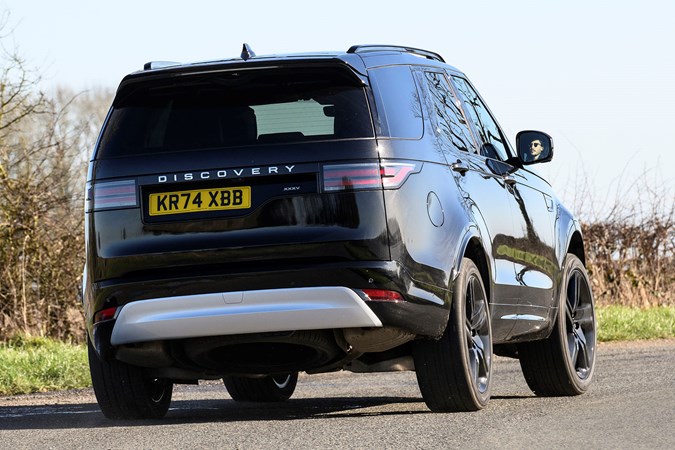
What’s it like off-road?
To ensure that it’s impressive off-road, there is a selection of off-road driving modes, which as well as making the most of its four-wheel drive system, use clever electronics to keep it from spinning its wheels when the going gets tough.
The Discovery has a 900mm wading depth, and its maximum ground clearance is 283mm. Not only that, but it has half a metre of axle articulation, which means it can deal with huge potholes and obstacles that get in the way of one side.


